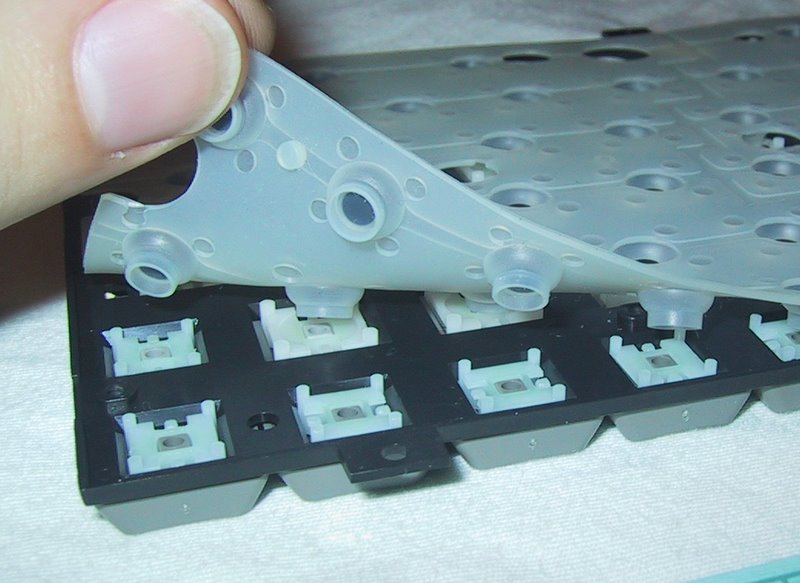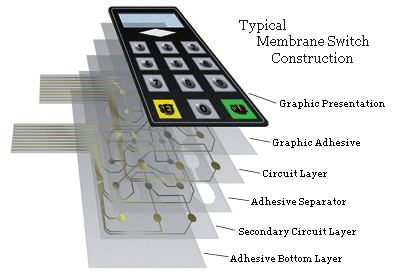Projects requiring accuracy should always involve a capable membrane switch manufacturer from the start.
Projects requiring accuracy should always involve a capable membrane switch manufacturer from the start.
Blog Article
Everything About Membrane Layer Switch Over: Understanding Its Design and Functionality
When you think of the control interfaces in modern devices, membrane buttons typically come to mind. These parts are a lot more than just switches; they mix style and performance effortlessly. Understanding exactly how they function and what makes them efficient can change your point of view on day-to-day electronic devices. There are nuances to their design and efficiency that you could not be mindful of. Let's explore what sets membrane layer changes aside from other control systems.
What Are Membrane Layer Buttons?

Their seamless nature makes them very easy to clean and resistant to dust and moisture, a crucial feature in many environments. Membrane switches can also be personalized concerning form, dimension, and graphics, enabling suppliers to create unique interfaces customized to particular items. And also, they're light-weight and slim, which assists in lessening the total mass of tools. Overall, membrane switches play a substantial duty in improving user experience across a large selection of applications.
Exactly How Membrane Switches Job
When you push a secret on a membrane switch, it turns on an uncomplicated yet reliable mechanism. membrane switch manufacturer. The leading layer, commonly made of flexible product, presses down onto a conductive layer below it.
You'll observe that the responsive feedback differs based on the button layout, offering either a soft click or a much more obvious reaction. As soon as you launch the key, the membrane layer go back to its initial placement, reopening the circuit and stopping the signal. This process occurs practically instantly, ensuring a receptive user experience.
Membrane switches are popular as a result of their resilience and resistance to dust and moisture, making them excellent for various applications, from house home appliances to medical gadgets. Comprehending this procedure assists you value their extensive use.
Secret Parts of Membrane Layer Buttons
Understanding the crucial elements of membrane switches is basic for understanding their functionality and design. The safety layer guards versus ecological elements and put on, expanding the switch's lifespan. By recognizing these parts, you'll obtain insight right into how membrane switches over operate and their importance in various applications.
Products Used in Membrane Layer Change Layout
The performance and durability of membrane switches heavily depend upon the materials utilized in their layout. You normally encounter polyester and polycarbonate as key substratums as a result of their outstanding toughness and flexibility. These products resist scratches and chemicals, making them perfect for requiring environments.
The conductive layers frequently utilize silver or carbon, selected for their reliability and conductivity. membrane switch manufacturer. Silver offers superior efficiency, while carbon is an affordable alternative. For the overlay, you might consider a matte or glossy coating, depending on your visual needs and customer experience
Make particular to select adhesives that hold up against environmental factors like temperature and moisture. Choosing the appropriate products will certainly assure your membrane switch stands the examination of time.
Layout Considerations for Membrane Layer Buttons
While designing membrane layer switches, it's crucial to consider numerous elements that influence their functionality and individual experience. Begin by focusing on the layout and button size; ensure they're intuitive and very easy to browse. Take into consideration the responsive comments you intend to offer-- will customers require a noticeable click or a softer touch? In addition, consider the materials you'll make use of, as they'll affect resilience and visual appeals.
Confirm your style fits ecological elements, like dampness or temperature level variants, which can impact efficiency. By meticulously considering these aspects, you'll produce a membrane layer switch that enhances functionality and fulfillment.
Applications of Membrane Layer Switches
Membrane buttons are flexible parts found in various applications, from commercial equipment to consumer electronics. You'll see their effect in makers that need resilient user interfaces and in devices that take advantage of sleek styles. Understanding these applications aids you appreciate the functionality and practicality of membrane layer buttons in day-to-day technology.
Industrial Devices Usage
When you're wanting to enhance the performance of industrial tools, membrane layer switches provide a dependable solution that incorporates longevity with easy to use layout. These switches are excellent for rough settings, offering resistance to dust, moisture, and chemicals. You'll discover them in control panels for manufacturing machines, a/c systems, and medical devices, where precision and responsiveness are crucial. Their low profile indicates they fit perfectly right into numerous tools, conserving useful area while keeping simplicity of usage. With customizable graphics and backlighting choices, you can develop an user-friendly interface for drivers, boosting performance and safety. And also, their long life-span reduces maintenance costs, making them a smart financial investment for your industrial applications. Embrace membrane layer buttons to streamline your operations and enhance general efficiency.
Consumer Electronic Devices Combination
In the domain of consumer electronic devices, membrane switches play an important function in boosting user communication and device performance. You'll find them in gadgets like microwaves, remotes, and video gaming consoles, offering a seamless means to interact with modern technology. Their smooth layout enables simple integration into various items, making controls user-friendly and user-friendly. With their capacity to include graphics and look at more info backlighting, you can delight in a modern-day aesthetic that enhances the tool's overall look. Membrane layer switches likewise assure sturdiness and resistance to dirt and moisture, expanding the life expectancy of your electronics. By selecting membrane layer buttons, you boost not just the capability but additionally the style of your gadgets, making day-to-day communications smooth and enjoyable.
Advantages and Downsides of Membrane Switches
While membrane layer switches supply a variety of advantages, they additionally feature some drawbacks that you must think about. One substantial benefit is their compact design, making them ideal for space-constrained applications. They're also economical, providing a durable solution with a low production cost. Additionally, their seamless surface is simple to clean, boosting hygiene in environments like healthcare facilities.

Membrane switches can have a much shorter life-span compared to mechanical switches, especially under heavy use. They can likewise be less tactile, which may influence individual feedback throughout procedure. Balancing these pros and disadvantages will certainly help you figure out if membrane switches are the best fit for your project.
Regularly Asked Concerns
For How Long Do Membrane Changes Usually Last?
Membrane switches over generally last between 5 to 10 years, relying on use and ecological conditions. You'll intend to evaluate aspects like wear, exposure to moisture, and temperature level changes to gauge their long life successfully.
Can Membrane Layer Changes Be Custom-made for Certain Styles?
Yes, you can tailor membrane layer buttons to fit certain layouts (membrane switch manufacturer). You'll have the liberty to choose shades, shapes, and designs that match your job's demands, guaranteeing they mix seamlessly with your overall visual
What Is the Cost Array for Membrane Layer Change Production?
The price variety for membrane button manufacturing usually falls between $1 and $10 each, depending upon elements like layout intricacy, amount, and materials. You can obtain go now quotes from manufacturers to find the most effective choice.

Are Membrane Layer Switches Over Waterproof or Resistant?
Membrane layer switches can be created to be waterproof or resistant, depending upon materials utilized and building approaches. If you require them for damp settings, assure you specify those needs throughout the design procedure.
How Do Membrane Changes Compare to Conventional Switches?
Membrane layer switches are generally thinner and get redirected here extra adaptable than traditional switches, using a smooth layout. They're typically simpler to clean up and integrate, but may not provide the responsive comments you're used to with mechanical alternatives.
Final thought

Report this page